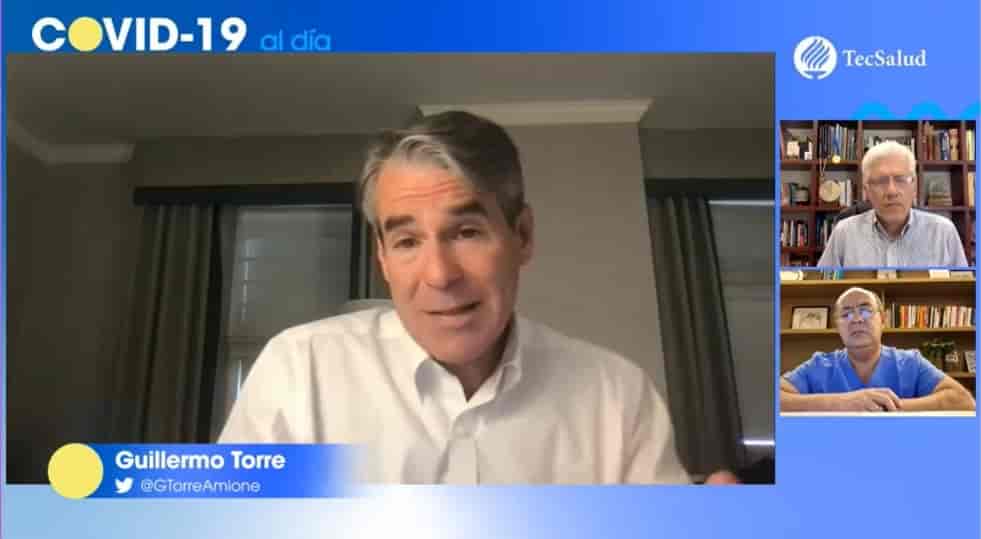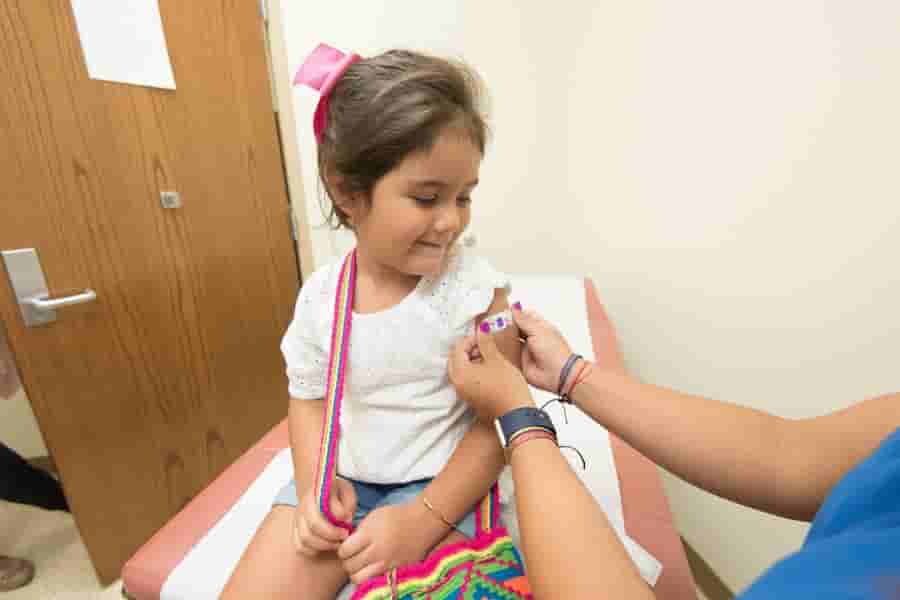The scenario of a fifth COVID-19 wave in Mexico is very likely to occur, but it won’t necessarily be catastrophic, agreed health experts convened by TecSalud.
Participating in the virtual session, “COVID-19 to date,” moderated by Dr. Guillermo Torre, Rector of Tec de Monterrey’s health system, were Dr. Francisco Moreno, an infectious disease specialist; and Dr. Alejandro Macías, Mexico’s former Influenza Tsar.
The experts pointed out that a lesser impact is expected in the country because a large part of Mexican society has already been vaccinated or infected with the virus.
However, they pointed out that we mustn’t lower our guard.
“The worst is over, but it isn’t over yet. There are still things to do,” explained Dr. Macías.

Not all Omicron variants have reached Mexico yet
Dr. Macías said that cases in Mexico are still low compared to other moments in the pandemic, noting that not all Omicron variants have been seen yet in the country.
“We haven’t seen the BA.4, BA.5, or BA2.12 variants yet, which are the ones causing problems in the United States, as well as in Europe and South Africa, which are very similar to us,” he explained.
Moreno stressed that, at least in Mexico City, the cases that have arisen are usually from people who have traveled abroad.
This expert added that this situation also occurred during the first phase of the pandemic, and that now, those who haven’t been infected with the variants or those who aren’t vaccinated are the most vulnerable.
“The cases that reach hospitals have been mild and consist primarily of immunosuppressed people who didn’t have a good response to the vaccine or who didn’t get vaccinated, but we’re definitely seeing a rebound,” Moreno reflected.
Given the possibility of a fifth COVID wave, the status of the variants, and recent hepatitis cases, the TecSalud experts spoke up to debunk myths and reflect on the next steps to take.
Although there is current concern about whether our health system is prepared to meet the needs of the population, Torre emphasizes that this type of space exists for open dialog and to help answer queries.
Recommendation to continue wearing a face mask
After two years of precautionary measures, Dr. Torre admitted that it’s normal to have lowered our guard as infections have decreased, but he stressed how imperative it is to resume good self-care habits.
In response to the possible arrival of new variants, the specialists emphasized the importance of continuing to wear a face mask, especially in enclosed spaces, and to look for open or well-ventilated areas.
Although Moreno considers face masks essential in enclosed spaces, he also thinks it’s a good idea to carry out an exercise of self-reflection about our own bodies.
“You should know yourself. If you’re a vulnerable person, with immunosuppression, or you couldn’t get vaccinated, you have to increase your preventative measures,” he urged the community.
Dr. Macías explained that although the risk is very low outdoors, ventilated spaces should continue to be promoted, crowds should be avoided, and people should even double mask if necessary.

“These measures and this message must be continued until the pandemic is over, and the end of the pandemic is still a long way off,” he said.
Booster dose required after primary immunization
On the topic of vaccines, the experts noted that the complete vaccination schedule consists of three doses.
“I hope that those people who continue to be reluctant to get vaccinated see that, after a year and a half and 12 billion doses administered, the risk is very low,” Moreno said.
Dr. Moreno also mentioned that mixing vaccines has proven to be safe. Although some combinations will be more effective than others, the important thing is to comply with the three doses of the vaccine.
“We currently have a mix between natural immunity, coming from those who have already been infected, as well as vaccine-induced immunity,” highlighted Dr. Macías.
For highly vulnerable people and/or people with immunodeficiencies, a fourth dose was recommended, but the doctor said that this is not obligatory for those who aren’t health-compromised.
Regarding daily activities, Dr. Macías reinforced the notion that, seeing as it’s an extremely contagious virus, it’s vital to be careful, but to gradually return to normality.
“We have to do what we’ve always done so that this virus disrupts our mobility, our economy, and our health as little as possible,” he reflected.
For people with chronic diseases such as diabetes, the recommendation is to keep an eye on their health and stay on top of managing their condition.

Vaccinating children from the age of five recommended
Even though they acknowledged that vaccine availability has been an obstacle to a significant number of Mexicans in complying with the schedule, the doctors said that vaccination may be given from the age of five.
Similarly, Dr. Moreno explained that vaccination of children under five is still under study, since the most effective dose to achieve an adequate immune response hasn’t been found.
“Moderna has already delivered their protocol to the FDA for vaccinating children from 6 months to 4 years, but it is not yet approved,” he shared.

Nevertheless, the doctors hope that the Pfizer vaccine, which is approved for children aged 5 and above, might reach the population soon.
“It’s very important to keep insisting and keep asking the authorities for the Pfizer vaccine for children,” Moreno said.
In turn, Dr. Macías emphasized that herd immunity is a false myth, and that vaccination not only helps prevent but also benefits those who have already been infected in the past.
“We have to learn to coexist with the virus, and that eventually involves vaccinating teenagers and children,” he said.
Cases of acute hepatitis of unknown origin in children
According to Dr. Macías, hepatitis is a common syndrome, with symptoms including jaundice, abdominal pain, nausea, vomiting, pain around the liver, dark urine, and light-colored stools.
“Generally, liver function tests are requested when a case of hepatitis occurs, which should usually read 40-50 units. With this hepatitis, they’re ten times higher than normal,” he explained.
Although the doctor said that these studies help to identify the type of hepatitis that the person is suffering from, he pointed out that there are cases where its nature can’t be determined, which may indicate a new branch of this disease.
“There are hypotheses that say the emerging cases we’re seeing where the type of hepatitis cannot be determined are linked to evidence of COVID-19,” he said.

Dr. Moreno said that regardless of the hypotheses and the nature of the emerging cases, it’s recommended to keep an eye on symptoms, particularly the whites of your eyes (sclera) turning yellow, and to go for an evaluation with a doctor.
“Right now, we have to take things calmly. We’re at a point where there’s much greater epidemiological surveillance than there was before to prevent us from being taken by surprise as we were with COVID-19,” he stressed.
“What COVID has created is greater awareness in the general public and in the media about these problems that may have gone unnoticed before.
“The final message to the community is: let’s remain vigilant, take care of ourselves, and not be overly alarmed by emerging cases, since we have great specialists on alert in the country,” concluded Dr. Torre.

YOU MAY ALSO BE INTERESTED IN:






